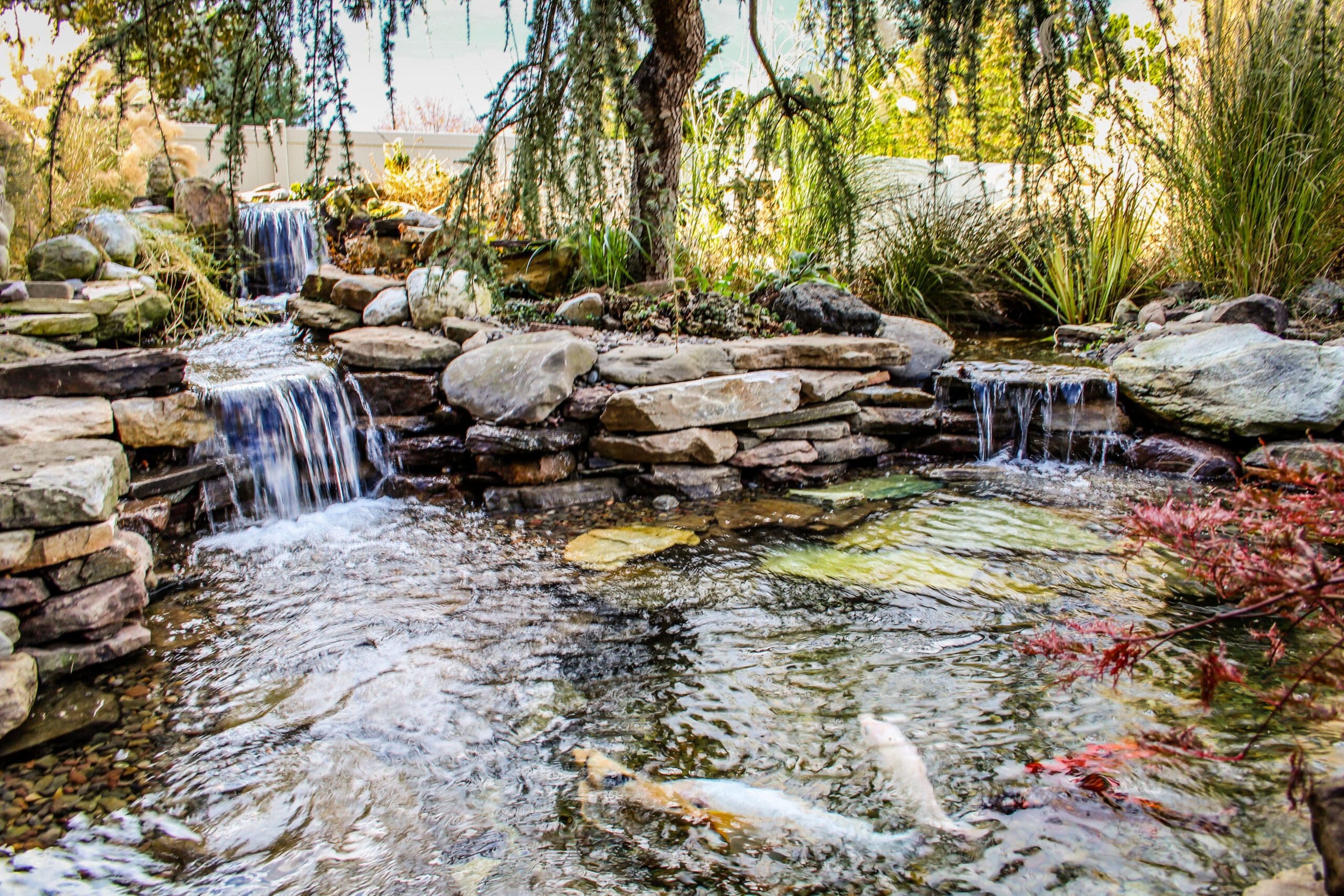Are you not sure what exactly you need for Fall Pond Care? As pond owners, the fall season is our cue to begin putting our ponds to bed for winter. It is important that we take precautions to protect our landscapes from the harsh reality of winter. Water features in the landscape require special consideration
There are some basic guidelines to help your aquatic plants and finned friends weather the chill of Mother Nature. Following our simple fall pond care tips will ensure that your fish joyfully greet you again in the spring.
Install Netting
Before the leaves start to fall, install a protective netting over your pond. Your maintenance will be much easier. Collecting and discarding leaves will be as easy as rolling up the net come spring.
Fall Pond Care: Remove Unwanted Debris
If you decide against using a net, be sure to remove any leaves or foliage from your pond’s surface before winter rolls into town. When this debris decays, it can produce toxic gasses that harm your fish. You don’t need to remove every single last leaf, but try to remove the majority.
Scrape Out Sunken Leaves
You’ll need to remove the build-up of leaves from the bottom of the pond as well. Use a long handled pond net to scoop them out. Check your skimmer basket and remove any leaves that are still caught inside.
Add Cold Water Bacteria
An important part of Fall Pond Care? Once temperatures drop below 50 degrees, begin adding Aquascape cold water beneficial bacteria to your pond. Use twice weekly for two weeks, and then once per week until the water starts to freeze.
Trim Pond Plants
To keep dead foliage from drooping over into your pond, trim back hardy marginal aquatic plants to 2″ above the water.
Trim Waterlilies
Similarly, keep waterlily leaves from decomposing into your pond by trimming them and stems back to 2-3″ above the base of the plant.
Over-Winter Hardy Waterlilies
As part of your Fall Pond Care, If you are housing waterlilies in a pot, do not bring them indoors. They require a period of dormancy. Instead, drop them into the deepest part of the pond to over-winter.
Relocate Tropical Waterlilies Indoors
If you want to over-winter your tropical waterlilies, be sure to bring them indoors. Their pot should maintain a water temperature of 50 degrees. You can also remove them from their pot and store in sand. Be advised, even trained horticulturists lose a lot of tropical waterlilies when storing them indoors, so you might simply want to treat them as annuals.
Fall Pond Care: Switch Fish Food
From now until temperatures drop below 50 degrees, u
se cold water fish food. Once temperatures drop below the 50 degree mark, stop feeding your fish altogether. Your fish need to get ready for a winter hibernation and can experience metabolic complications if you continue to feed them.
Contact us for more information or to set up fall service.






